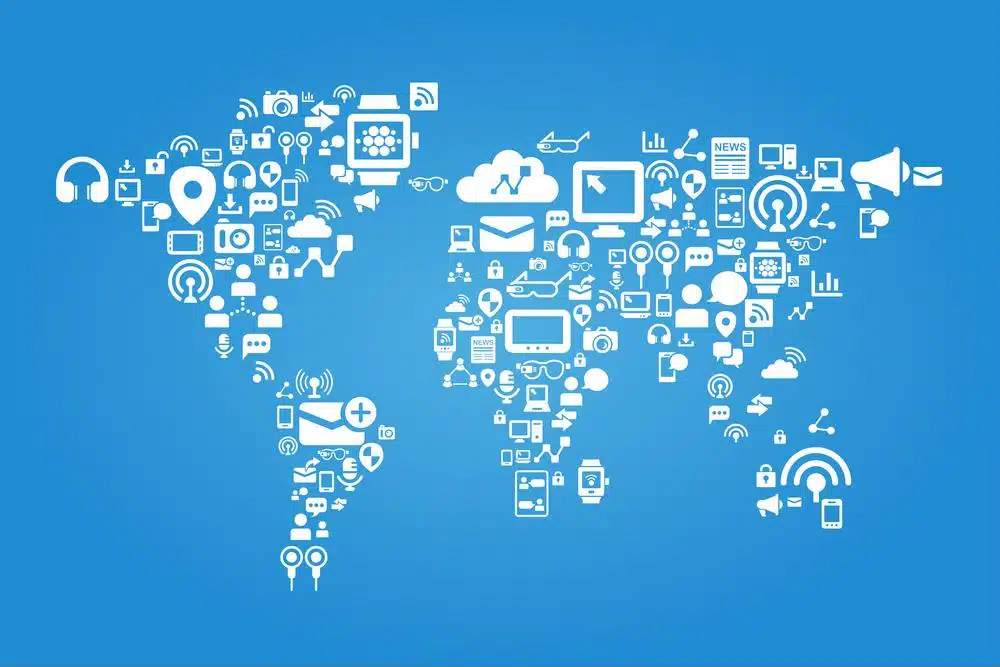The internet of things has changed telecommunications across the globe. This ever-expanding web of connected objects, devices and environments continues to challenge wireline and wireless service providers as they trailblaze and shape their businesses according to what they find.
What these businesses already know pleases them tremendously. It’s what these businesses don’t know about the IoT that keeps them up at night. As with any nascent technology, little is known about how to proceed into this new territory.
Here are the five attributes we think are essential to any telecom provider hoping to make a splash with IoT technology:
1. Strong processing power
A 2017 telecom study conducted by Deloitte found U.S. consumers check devices a cumulative 9 billion times every day. Every one of those experiences needs a network.
But don’t forget, the IoT has just as many, if not more, implications for the commercial and industrial sectors, where enterprise mobility and low-cost, high-tech sensors have revolutionized everything from point of sale to supply chain management to asset maintenance programs for million-dollar pieces of equipment.
 Interconnected hardware is consuming the world. Don’t let it consume your business.
Interconnected hardware is consuming the world. Don’t let it consume your business.Without the processing capabilities to handle the high-volume demand of these billions and trillions of small connections, communication service providers will disappoint their customers and deny them the seamless IoT experience competitors promise.
2. Efficient interfacing of usage data
Before rating usage for a single IoT connection, CSPs must pull together many disparate elements to create a comprehensive and actionable usage profile, information such as where a connection initiated, how much data was transferred, the quality of that data, etc. Telecom billing for IoT devices could not happen without such collaboration.
CSPs also require a streamlined method for bringing these components into coordination. Failure to do so, especially at a time of great complexity, results in hemorrhaged potential revenue and mix-ups that can tank customer satisfaction and retention.
3. Dynamic rating
There are as many variables to consider when rating IoT usage as rating calls or connections made over wireline. And as the technology matures, the entire telecom industry should expect those variables to only multiply.
As much as the burgeoning IoT represents a new frontier for revenue, CSPs will have to manually manage product SKUs unless they develop dynamic rating processes that adjust themselves according to shifting variables. Without a degree of automation, IoT ratings can overburden administrators, confuse customers, bleed revenue and wreak havoc on billing maintenance.
4. Pricing plan diversity
Speaking of billing, CSPs hoping to capitalize on the IoT will have to offer a variety of billing plans to suit all the different ways their customers expect to use and be billed for their myriad devices: fixed rate, variable rate, single tier, rolling tier, usage-based, and don’t forget any promotional or discount bundling campaigns.
CSPs most prepared for the future of the IoT are ones that create efficient systems for establishing desirable pricing plans and implementing them dependably, as well as transparently, to prevent unbillable usage. Furthermore, they must also build agility and flexibility into how they track and bill usage, so they can roll out new pricing options or tweak legacy offerings to satisfy evolving tastes.
 As the nature of work changes to adapt to the IoT, so will how people use IoT-enabled devices.
As the nature of work changes to adapt to the IoT, so will how people use IoT-enabled devices.This aspect is doubly important when you consider regulatory oversight. In April 2016, the Department of Commerce National Telecommunications and Information Administration began requesting public comment on the impact and importance of the IoT across all industries, as well as where governments should intervene or butt out. Currently, several government agencies regulate IoT in piecemeal relative to their fields. No one agency rules over all. In time, those duties may centralize, leading to the establishment of regulations and crackdowns on noncompliant CSPs. To prepare, a telecom business plan must be malleable.
5. Continued appreciation for the past
While we’re all excited about the prospects of the IoT, CSPs cannot leave customers who prefer the wireline and wireless services they’ve enjoyed for years. By going all-in on the IoT, CSPs can upset and churn their most loyal customer bases, especially those with B2B telecom packages deeply integrated into how they conduct business day to day.
But as those subscribers begin do more than wonder what the IoT means for them, they will want their telecom providers to have diverse bundles at the ready so they can easily adopt the latest IoT technologies and provision them as necessary.
Learn more about telecom billing as a service and telecom billing OSS for the IoT by contacting an IDI Billing Solutions representative today.

